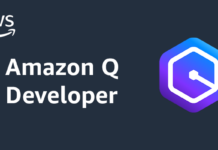Today marks a significant milestone as we celebrate the 10th anniversary of Amazon Elastic Container Service (ECS), a pivotal technology that has transformed how we interact with the cloud. From its humble beginnings as a tool designed to simplify the management of Docker containers on Amazon Web Services (AWS), ECS has evolved into an indispensable part of cloud technology. It not only offers remarkable performance but also provides operational simplicity through serverless solutions like AWS Fargate, which facilitates seamless container orchestration.
In the past decade, Amazon ECS has become a reliable solution for numerous organizations, showcasing its dependability and performance. For companies like SmugMug, ECS has been crucial in streamlining their operations without getting bogged down by infrastructure complexities. According to Andrew Shieh, Principal Engineer at SmugMug, ECS has been the "unsung hero" in their transition to AWS, efficiently handling vast data operations, such as moving petabytes of photos to Amazon Simple Storage Service (Amazon S3). The rapid container start-ups made possible by ECS have allowed them to deliver exceptional experiences to their customers. This kind of dependable support has made ECS a favorite among developers and platform teams, helping them to scale and innovate consistently over the years.
In the early 2010s, as containerized services like Docker began to gain traction, developers were in search of efficient ways to manage and scale their applications within this new framework. Traditional infrastructure was often cumbersome, and managing containers at scale posed a significant challenge. Enter Amazon ECS in 2014—a solution that arrived at just the right time, offering a fully managed, reliable service that streamlined container orchestration on AWS. This allowed teams to concentrate on building and deploying applications without the burden of managing clusters or complex infrastructure, ushering in a new era of cloud-native development.
When the Amazon ECS team set out to build the service, their vision was clear. As Deepak Singh, the product manager who launched Amazon ECS and now serves as VP of Next Generation Developer Experience, stated, "Our customers wanted a solution that was deeply integrated with AWS, that could work for them at scale and could grow as they grew." ECS was designed to leverage the best of AWS—scalability, availability, resilience, and security—providing customers with the confidence to run their applications in production environments.
Evolution of ECS
Amazon ECS has continuously innovated over the past decade, marking the beginning of container innovation at AWS and laying the groundwork for a broader ecosystem of container-related services that have revolutionized how businesses build and manage applications.
Organizations like Smartsheet have praised ECS and AWS Fargate for their substantial impact on business operations. As Skylar Graika, a distinguished engineer at Smartsheet, shares, "Our teams can deploy more frequently, increase throughput, and reduce engineering time from hours to minutes. We’ve transitioned from weekly deployments to multiple daily deployments, significantly cutting down on the time previously required by engineers." Over the past year, they’ve scaled their capacity by 50 times while improving efficiencies and simplifying security and compliance processes. Additionally, by adopting AWS Graviton with Fargate deployments, they’ve achieved a 20% cost reduction.
Amazon ECS played a crucial role as the starting point for a decade of container evolution at AWS. It remains one of the most scalable and reliable container orchestration solutions, powering massive operations such as Prime Day 2024, where Amazon launched an impressive 77.24 million ECS tasks. It also supports Rufus, a shopping assistant experience powered by generative AI, which uses ECS as a core component of its architecture.
Rustem Feyzkhanov, ML engineering manager at Instrumental and AWS Machine Learning Hero, acknowledges the increased efficiency gained from adopting ECS. "Amazon ECS has become an indispensable tool in our work," says Rustem. "Over the past years, it has simplified container management and service scaling, allowing us to focus on development rather than infrastructure. This service enables application code teams to co-own infrastructure, speeding up the development process."
Key Milestones of ECS
Let’s explore some of the crucial milestones that have shaped the evolution of ECS, marking pivotal moments that changed how customers harness the power of containers on AWS.
2014 – Introduction of Amazon EC2 Container Service: This marked the release of ECS in preview mode, allowing customers to run, stop, and manage Docker containers on a cluster of Amazon Elastic Compute Cloud (EC2) instances with built-in resource management and task scheduling. It became generally available in April 2015.
2015 – ECS Auto-Scaling: With added support for more Amazon CloudWatch metrics, customers could now automatically scale their clusters by monitoring CPU and memory usage and setting threshold values for auto-scaling. Another impactful release was the introduction of Amazon ECR, a fully managed container registry that streamlined container storage and deployment.
2016 – Application Load Balancer (ALB) for ECS: The introduction of ALB provided advanced routing features for containerized applications, improving traffic management and scalability for ECS workloads. Windows users also benefited from various releases, including support for Windows Server 2016 and beta support for Windows Server Containers.
2017 – Introduction of AWS Fargate: Fargate was a significant advancement, allowing customers to run containers without managing the underlying infrastructure. This enabled developers to focus entirely on their application logic while AWS handled provisioning, scaling, and maintenance.
2018 – AWS Auto Scaling: This release allowed teams to easily build scaling plans for their ECS tasks. Other improvements included moving Amazon ECR to its own console experience and integrating Amazon ECS with AWS Cloud Map. AWS Fargate also expanded into regions worldwide.
2019 – Availability of Arm-based Graviton2 Instances on ECS: AWS Graviton2 was released, focusing on improved performance and lower power usage. EC2-instances powered by Graviton2 were supported on ECS from day one. AWS Fargate Spot was also launched, helping customers achieve significant cost reductions.
2020 – Introduction of Bottlerocket: This open-source, Linux-based operating system was optimized for running containers, improving security and simplifying updates for ECS users.
2021 – ECS Exec: This feature allowed customers to run commands directly inside a running container on Amazon EC2 or AWS Fargate, enhancing troubleshooting and debugging capabilities without requiring container modifications or redeployments.
2022 – Introduction of Amazon ECS Service Connect: This release simplified service-to-service networking for organizations running microservices architectures on ECS, improving communication management between services and enhancing observability, resilience, and security.
2023 – Amazon GuardDuty ECS Runtime Monitoring: This feature enhanced security by detecting potential threats within running containers, providing continuous visibility into workloads without additional performance overhead.
2024 – Integration of Amazon ECS Fargate with EBS: This year, ECS and AWS Fargate added support for Amazon EBS volumes, enabling persistent storage for containers and simplifying deployment for data-intensive applications.
Current State of ECS
Amazon ECS is in an exciting phase of maturity, continuously innovating while delivering substantial value to both new and existing customers. Recent improvements have made the service more secure, cost-effective, and user-friendly.
Some notable releases include support for automatic traffic encryption using TLS in Service Connect, enhanced stopped task error messages for easier troubleshooting, and the ability to restart containers without relaunching tasks. The introduction of Graviton2-based instances with AWS Fargate Spot has provided customers with significant cost-saving opportunities.
Nick Coult, Director of Product and Science, Serverless Compute, emphasizes AWS’s commitment to customer satisfaction, stating, "With Amazon ECS and AWS Fargate, we make it easy for you to focus on your business logic while leveraging AWS’s powerful compute capabilities without managing it. Our vision is to minimize infrastructure management, write less code, architect for extensibility, and drive high performance, resilience, and security."
Conclusion
Reflecting on its history, ECS embodies AWS’s approach of working backwards from customer needs. From streamlining container orchestration to the transformative introduction of Fargate and Service Connect, ECS has evolved to remove barriers for developers and businesses.
As we look to the future, ECS promises to push boundaries, enabling more innovative and scalable solutions. We encourage everyone to explore ECS further, discovering new ways to build and maximize the platform’s potential. There’s much more to come, and we’re excited to see where this journey leads.
Learning Resources
For those new to Amazon ECS, we recommend reading the comprehensive Getting Started With Amazon ECS guide. When you’re ready for hands-on training, try this self-paced Amazon ECS workshop. Cheers to another decade of container innovation!
For more Information, Refer to this article.

































